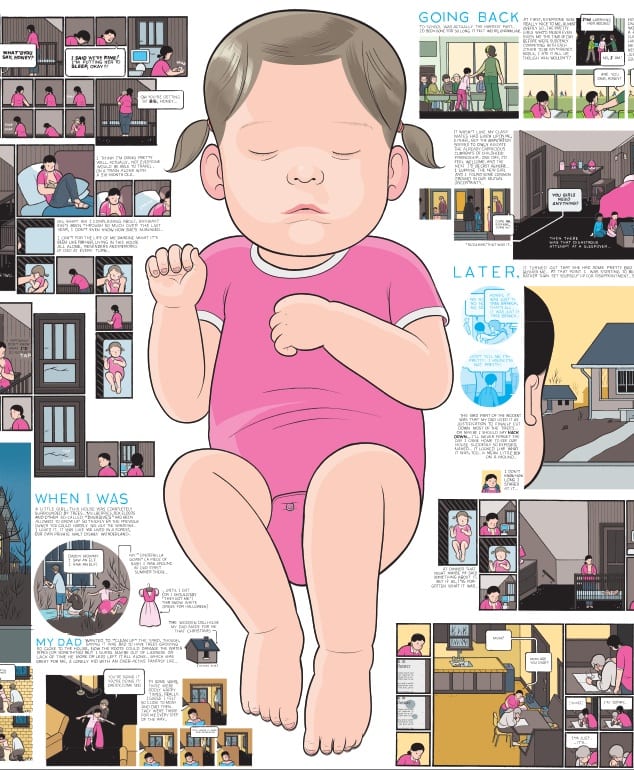Today on the site, we have Chris Mautner's interview with Glyn Dillon, creator of the new graphic novel, The Nao of Brown. Here's a brief exchange:
MAUTNER: You were talking about your brother’s influence on you in making comics. Do you feel competitive with him?
DILLON: When I was young and just boldly, precociously going to editors and showing them my work, I think they didn’t turn me away because they knew I was Steve’s brother. If I wasn’t his brother, they might have said, “Come back when you’re a bit better.” But they’d always be kind enough to entertain me when I went into their offices and bugged them. But my brother was always very conscious of not wanting there to be any nepotism, so he never helped out. I never did any work for Deadline until he stopped editing it. It was the next phase of the editors that came in that invited me to do some work. So I didn’t feel competitive, no. Not with him. In the early days of the Internet when Google was brand-new I’d Google my name and there was some quote that said, “Glyn Dillon, Steve Dillon’s less talented brother.”
MAUTNER: Ouch.
DILLON: I suppose that spurs me on a little bit, but I don’t feel direct competition with him. He’s lovely. We get on really well.
We also continue our coverage of Chris Ware's Building Stories with Joanna Davis-McElligatt's "Body Schemas", which examines the way Ware handles human physicality:
If Jimmy Corrigan is a comic about men and representations of race, then Building Stories is about women and representations of sex and gender. As such, Ware’s attention to the principles of physiognomy have turned corporeal, centered almost compulsively on the female body. His protagonist is singularly obsessed with her body’s shape and size, an attention that is often expressed as self-loathing. Women’s bodies are everywhere in Building Stories: the protagonist’s childhood, young adult, pregnant, post-baby, and middle-aged bodies; her landlord’s youthful and elderly bodies; the bodies of the protagonist’s friends, including her best friend, Stephanie, who is recurrently mocked for being “fat”; the body of her downstairs neighbor, who in middle age has developed “child-bearing hips … without bearing any child”; and the infant body of the protagonist’s daughter, Lucy, blown up to an enormous size in the middle of a page.
Elsewhere on the internet:
—The Phoenix New Times interviews Carol Tyler in advance of the final installment of You'll Never Know.
—Drew Friedman shares several personalized drawings he's received from Mad artists.
—Sean T. Collins reads and critiques 67 different comic-book issues at once.
—Matthias Wivel republishes his 2004 interview with Gary Panter.
—At the Hooded Utilitarian, Noah Berlatsky takes note of Joe Sacco, and Jacob Canfield worries about Johnny Ryan and Benjamin Marra.
—Apparently Clark Kent quit his job or something? I'm not going to link to them (such behavior should not be rewarded), but newspapers are actually reporting on this comic-book plot point as if it is news. This continual urge on the part of the media to treat fictional events as newsworthy developments is the one thing comics as an art form has going for it that no other American art form seems to, but boy does it seem dumb.






